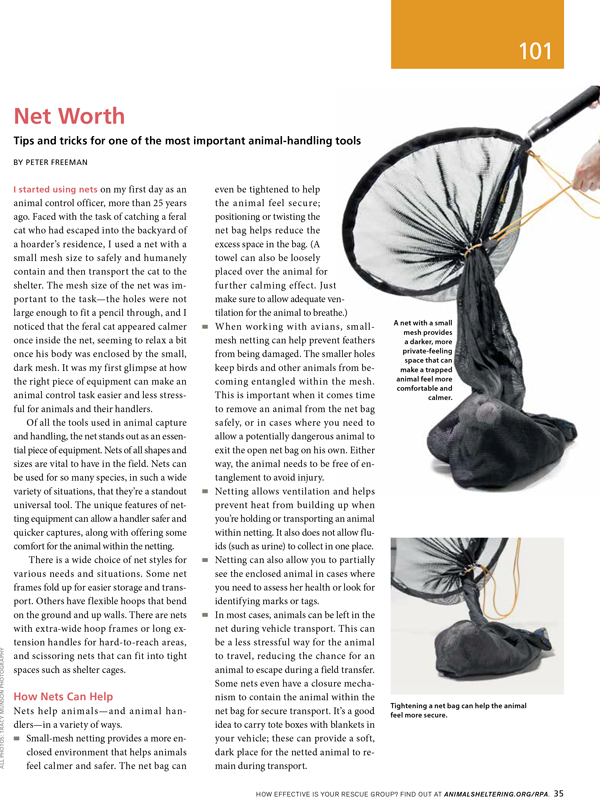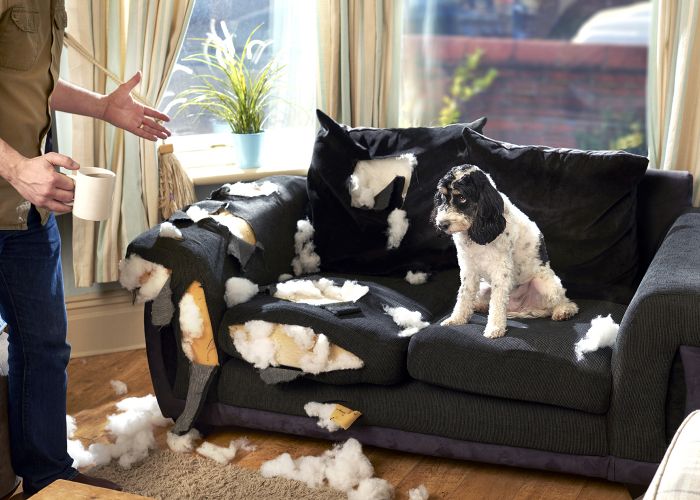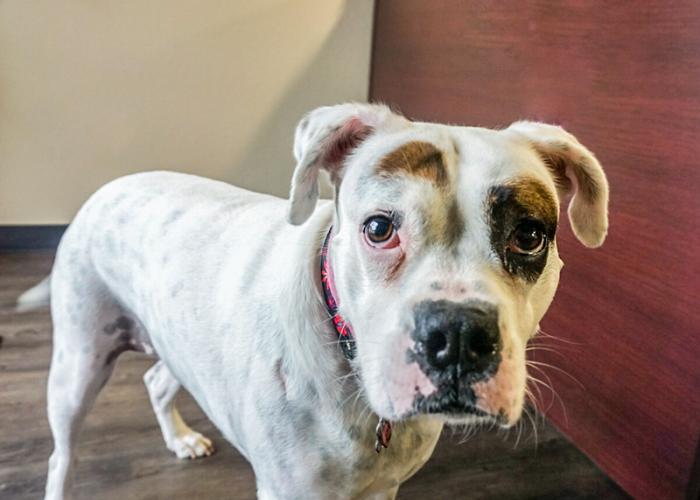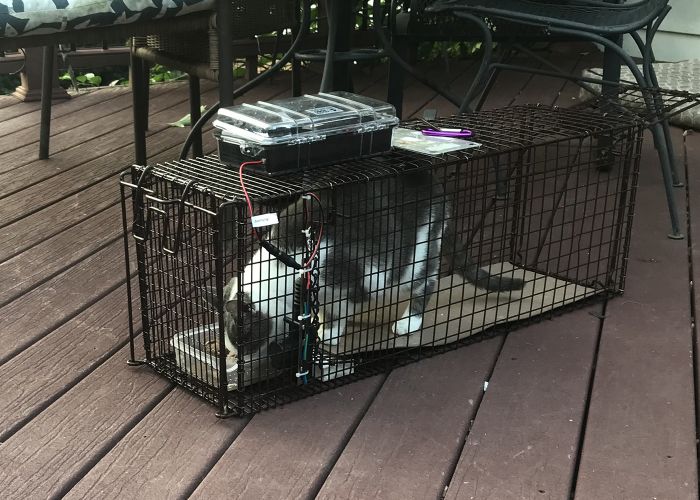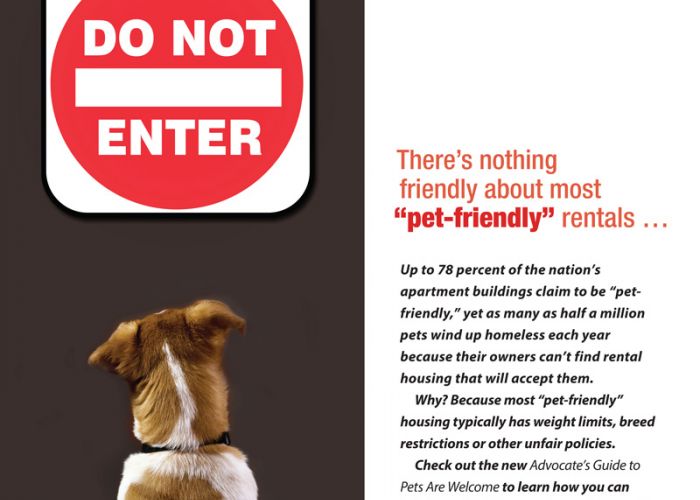The good and the bad on control poles
Choosing and using poles to handle animals safely and humanely
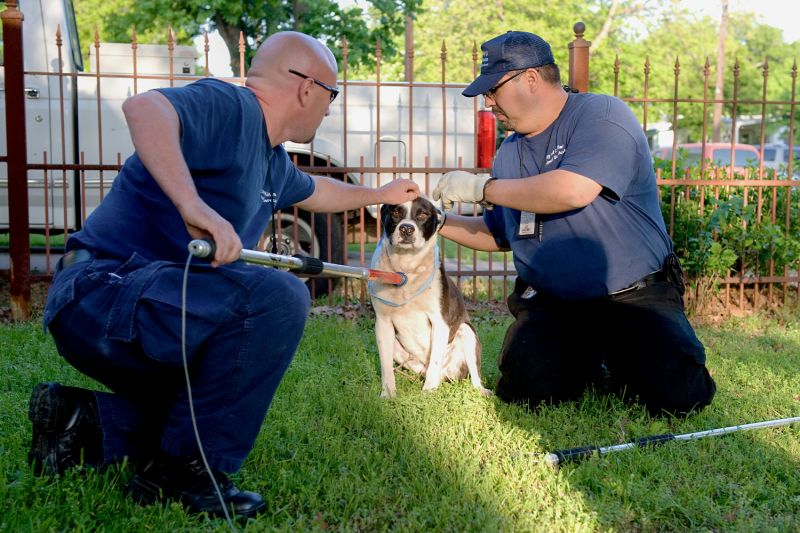
Control poles have sparked debate for decades.
Dave Pauli, program manager for wildlife conflict resolution at Humane World for Animals, calls them “the most misused animal handling tool in the industry.”
When Pauli visits shelters, he asks the animal care and control officers to produce their control poles, then holds them up in the air to inspect them. If they’re straight and have a few tooth marks in them, “they’re being used properly,” he says. But sometimes he sees poles that “have a slight arc, because they’re using them as a lifting tool,” often to hoist a dog—or, worse, a cat or a wild animal—into their truck.
Using a control pole that way essentially turns it into a noose, and the animals trapped within it typically react accordingly.
Veteran field officers agree that control poles have the potential to be both humane animal handling tools and dangerous weapons. The difference typically comes down to training, says Jessica Johnson, senior director of the Animal Rescue Team for Humane World for Animals and Humane Society International.
Nearly 20 years ago, when Johnson was promoted from kennel technician to animal control officer for a Florida shelter, she was handed her first control pole—with no instructions on how to use it. “I had to work through that on my own,” she says.
Fortunately, most agencies today recognize the value of comprehensive training for their field officers. Online courses by the National Animal Care and Control Association and other organizations make it easier for officers to get expert guidance on the proper use of control poles and other tools. As a result, Johnson says, cases of animals being injured or killed through misuse of a control pole have become rarer.
Veteran field officers agree that control poles have the potential to be both humane animal handling tools and dangerous weapons. The difference typically comes down to training.
Control issues
Control poles are often referred to as catch poles, but that’s a misnomer, says Johnson. They shouldn’t be used to capture, drag or lift an animal. They’re designed to temporarily restrain and gently coax dogs where you want them to be.
With rare emergency exceptions, control poles should never be used on cats or wildlife. “Species that have never been restrained on a leash will fight the device, which can cause neck, tooth and jaw injuries,” Pauli says. “The human handler will then often react by tightening the cable noose, causing respiration and consciousness issues.”
For toy breed dogs (such as Chihuahuas), control poles are seldom necessary, adds Lindsay Hamrick, HSUS director of shelter outreach and engagement. “A thick blanket, bite gloves and some patience will do the trick.”
But when it comes to handling a dog who is aggressive or scared, the control pole can be a “really useful and valuable tool,” Johnson says.
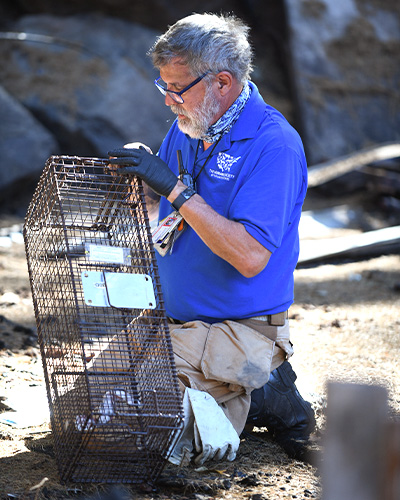
Every year, Johnson and her Animal Rescue Team colleagues respond to numerous large-scale seizures, including puppy mills, dogfighting operations and other cruelty situations. To remove dogs from a property, team members first work to win the animal’s trust so they can be leashed or picked up. If a rescuer doesn’t feel comfortable handling a particular dog, they enlist the help of a more experienced colleague.
“We start with the least invasive approach we can,” Johnson says, “but sometimes you have to elevate your strategy.” In about half the cases the team responds to, they have to use a control pole on at least one dog who’s not comfortable with handling.
Control poles come in a variety of sizes appropriate for different spaces. It’s important to choose a pole with a coated wire cable and a fully swiveling head so the cable won’t twist if the animal starts rolling, Johnson says.
Like all tools, control poles require maintenance. “A rusty or dirt-packed cable release can malfunction,” Pauli says. The cable can then “become locked or twisted at the critical moment the handler is attempting to release the animal from restraint, which can create a life-threatening choking situation.”
To maintain poles in proper order, oil the cables regularly and replace them every 18-24 months. Be sure the loop retains a rounded shape rather than a tear shape by storing the pole on a flat surface or using broom clips.
Evolving tools and approaches
Along with ensuring that their officers learn to use and maintain control poles properly, agencies should also be aware of other options out there.
The Y pole has become a popular alternative to the control pole for handling fearful dogs inside the shelter or other confined spaces. Equipment manufacturers now sell a variety of live traps and nets that provide officers with options for handling different species and situations in the field that the control pole is not as well suited for, Pauli says.
As equipment has evolved, so have handling techniques. In virtual and in-person training courses, Pauli and other experts teach gentler, more effective approaches than the old “control and dominate” strategies of the past.
“Move low, slow and soft,” Pauli tells his students, while demonstrating animal capture and handling strategies that minimize any physical trauma or distress to the animals. He also teaches solutions to human-wildlife conflicts that don’t involve capturing the animals.
More and more, field officers are learning to use the control pole properly to minimize any negative impacts on the animal, Pauli says, and that includes saving the pole for the situations where it’s truly needed.
Documents
